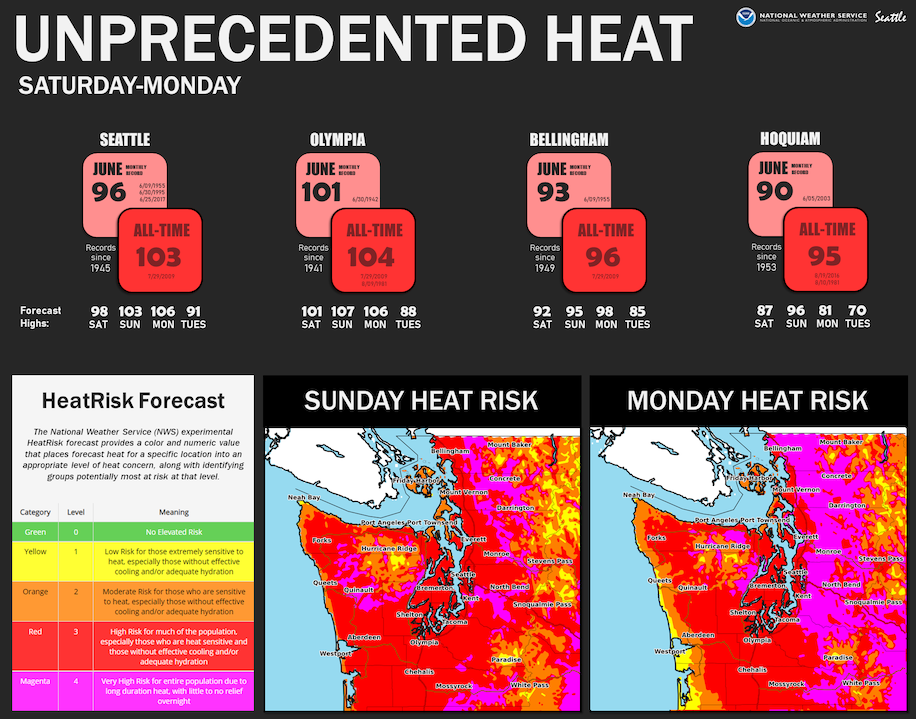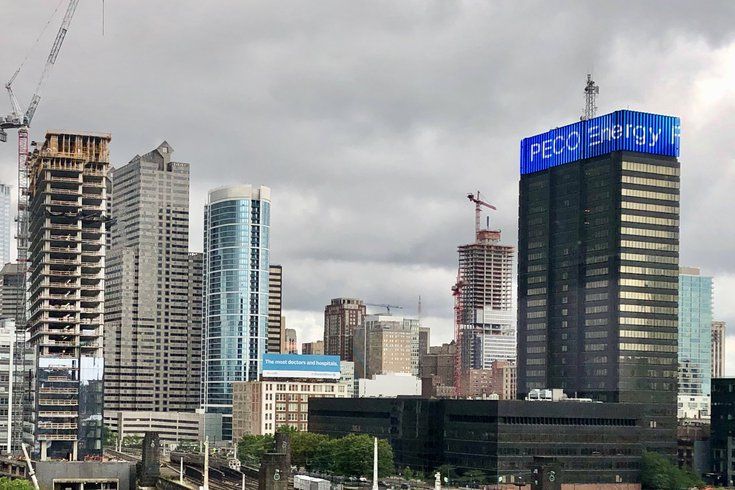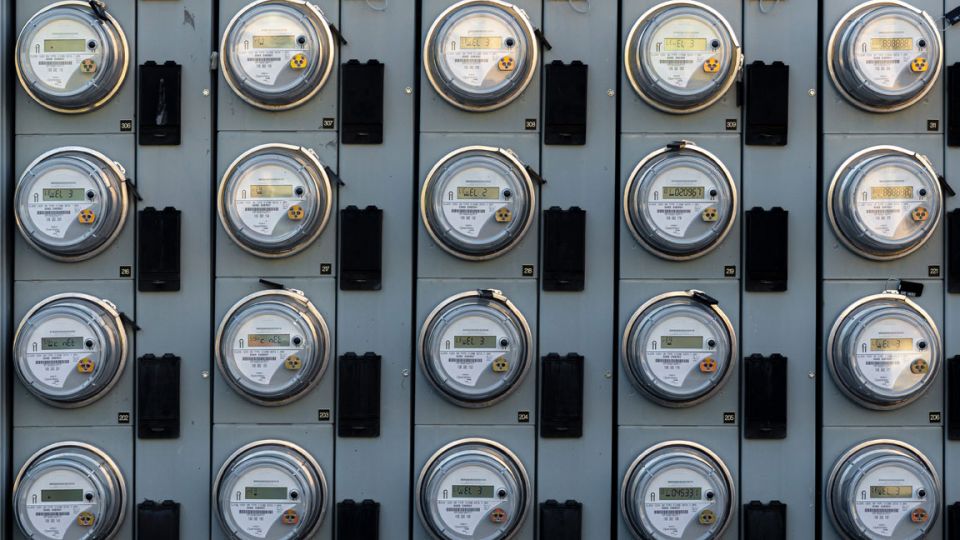
Rosenthal, A., Leone, B., Kenner, A., Adams, J., Morgan, S. (2021, June). "Energy in COVID-19: June 2021 Media Brief." Energy in COVID-19. The Energy Vulnerability Project. Platform for Experimental and Collaborative Ethnography. Retrieved from The Energy Rights Project
The first article for this media brief discusses public perception of electric vehicles. America is a country with a deeply rooted car culture and a lacking public transportation system. A study by the PEW research center indicates that Americans are divided on the idea that the country should phase out combustion engine vehicles by 2035 with 47% of U.S. adults supporting the idea while 51% oppose it (Spencer and Funk 2021). Other results from their study showed that 39% of Americans say the next time they purchase a vehicle, they are at least somewhat likely to purchase electric while 46% stated they are not too or at all likely to do so (Spencer and Funk 2021). Another 14% reported they are not expecting to purchase a car or truck in the future. It is commonly said the most eco-friendly device you own is the one you already have (although there are obviously exceptions). The pollution generated in the process of creating an electric car means that it is more beneficial to keep a perfectly good working car than to purchase an electric one. No information was given on how many people reported they would buy a used electric car. Climate scientists are in agreement that we need to dramatically reduce our carbon consumption in order to prevent catastrophe, but the fact that a majority of Americans oppose phasing out combustion vehicles by 2035 puts energy security at risk. America’s car culture is one of the biggest contributions to our greenhouse gas emissions and we are starting to see the impacts of it with the extreme weather events that occurred over the summer.
The second article discusses a historic and unprecedented heat wave has swept through the country this summer, particularly in the Pacific Northwest with areas in Washington state seeing temperatures as high as 113 degrees fahrenheit. The heatwave is particularly detrimental for households who may lack access to air conditioning or adequate air conditioning. “Populations most vulnerable to excessive heat are older adults, the sick, those experiencing homelessness and those who are socially isolated. Outdoor workers can also be in danger if not given frequent breaks,” the article states (Samenow and Leonard 2021). Heat Domes, which are large domes of high pressure, are largely responsible for heatwaves and evidence suggests they are getting more severe as time goes on due to climate change. A temporal analysis of the heatwave shows how a feedback loop is generated by such a heatwave. As temperatures increase, people with air conditioning are more likely to turn their air conditioning up for longer periods of time, which, in turn, contributes to more severe heat domes. Only time will tell when the breaking point for this cycle will be but if this cycle continues the consequences could continue to pile up, which is argued in our next article.
The third article elaborates on potential disruptions that could occur as a result of the unprecedented heat wave. A report by North American Electric Reliability Corporation's (NERC) Summer Reliability Assessment concluded that parts of the United States are at elevated or high risk for potential electricity emergencies this summer due to the increasingly hot summers caused by climate change. As mentioned previously, cooling infrastructure in the U.S. actually creates a feedback loop with phenomena like heat domes, which then lead to increased electricity demand due to temperature-related loads, such as use of air conditioning units.
According to NERC’s assessment, electric supply shortages may occur in the western United States, Texas, New England, and parts of the Midwest (Manzagol 2021). The Western Electricity Coordinating Council (WECC), which includes the western half of the United States, is at significant risk for disruptions. California, a WECC subregion, is at the highest risk of an electricity emergency. ERCOT, which only a few months ago faced a crisis in Texas, along with MISO (Midcontinent Independent System Operator) and New England are also at an elevated risk. This situation is one that the Energy Rights Project will be paying close attention to. Every state witnessed what occurred in Texas, and it will be telling to see what measures they take to prevent a blackout such as the one that occured in Texas. This potential crisis would be caused by extreme heat, when only a few months ago, a power grid failure in Texas was due to extreme cold. Studies on how states allocate resources to manage the extreme cold vs extreme heat could yield interesting results, especially in states that have only had to deal with one of these extremes until recently. As can be with the blizzard followed by an extreme heatwave only a few months later in Texas, states all over the country are experiencing temperatures and weather conditions previously thought to be nearly impossible.
The feedback loop mentioned when discussing the second article comes up again in the fourth. This article discusses a report by the nonprofit North American Electric Reliability Corp which found Texas to be at elevated risk of power shortfalls (Takahashi 2021). The primary reason for these shortfalls is pinned on the extreme heat which is expected to be a regular occurrence this summer. As temperature increases, people will turn on their climate-damaging AC systems, leading to hotter temperatures later on. On a federal level, many activists are calling on the Biden administration to do more to combat climate change so situations like this do not get worse.
The final article in this theme discusses activists pressuring the Biden administration into including more measures in his infrastructure bill that would target climate change. The Biden Administration is planning to achieve many of their legislative goals through two bills, one that is a bipartisan infrastructure bill and the other is a reconciliation “Build Back Better” plan. With the latter bill being put on an indefinite hold due to two conservative Democrats, those in Congress are putting pressure on the president to include some of the climate measures in the Build Back Better plan into the bipartisan infrastructure bill, with Senate Finance Committee Chairman Ron Wyden, D-Ore stating, "It will not include comprehensive clean energy policy, and I am not willing to support throwing climate change overboard [...] The two bills have to be directly connected” (Daly 2021). The bipartisan infrastructure bill contained many drastic cuts to the climate proposals, including “plans promoted by Biden to make electricity carbon-free by 2035 and spend hundreds of billions in tax incentives for clean energy such as wind and solar power and technologies that capture and store carbon emissions” (Daly 2021). It appears that, at least for the time being, federal level climate agendas are at a standstill. This article shows the need for local and state level agenda setting to mitigate climate change, but even that is not enough. This brings us neatly to the next theme, which discusses energy policy shortfalls.

National Weather Service (2021, June 26) "‘Historic, dangerous, prolonged and unprecedented’ heat wave swells over Pacific Northwest" Washington Post https://www.washingtonpost.com/wp-apps/imrs.php?src=https://arc-anglerfi...
Spencer, Alison, and Cary Funk. 2021. “Electric Vehicles Get Mixed Reception from American Consumers.” Pew Research Center (blog). June 3, 2021. https://www.pewresearch.org/fact-tank/2021/06/03/electric-vehicles-get-m....
Samenow, Jason, and Diana Leonard. 2021. “Historic Heat Wave in Pacific Northwest Begins - The Washington Post.” June 26, 2021. https://www.washingtonpost.com/weather/2021/06/25/pacific-northwest-heat....
Manzagol, Nilay. 2021. “NERC Report Outlines Potential Electricity Disruptions in the United States This Summer - Today in Energy - U.S. Energy Information Administration (EIA).” June 30, 2021. https://www.eia.gov/todayinenergy/detail.php?id=48536.
Takahashi, Paul. 2021. “Texas among U.S. Regions at Elevated Risk of Summer Power Shortfalls.” Houston Chronicle. June 30, 2021. https://www.houstonchronicle.com/business/energy/article/Energy-Departme....
DALY, MATTHEW. 2021. “New Infrastructure Deal Must Focus on Climate, Activists Say.” The Philadelphia Tribune. July 5, 2021. https://www.phillytrib.com/news/new-infrastructure-deal-must-focus-on-cl....
This month's media brief contains three themes.
The first theme focuses on energy security with articles that discuss how the 2021 heatwave and climate change create potential for energy shortages that might occur in at-risk areas.
Energy security is a common term in the energy sector and STS literature. It refers to the stability of energy supplies at an affordable price. The first section will discuss how climate change, and more specifically the 2021 heatwave, threaten energy security in the United States.
The second theme is about energy policy shortfalls, specifically how the latest rounds of energy provisions -- from utility and rental assistance to energy supply -- fail to adequately address the problems at hand. A policy is inadequate when it either fails to address the problem at hand, does not have the necessary funding or supplies to address the problem, leaves too many people unassisted, or a combination of all three.
The last theme of this media brief discusses energy policy proposals including those that could soften the blow of utility shutoff moratoria ending and carbon capture. As America emerges from the pandemic, issues such as the housing and climate crisis are going to be at the forefront. As such, many proposals from many different interests are being considered. This section will give examples of different energy futures and policy proposals.
The first article in this section discusses PECO’s current situation with getting eligible customers to apply for energy assistance. According to author Hannah Kanik, “just 14% of PECO's eligible residential customers are utilizing the company's customer assistance programs” (Kanik 2021). This is despite the fact that PECO has millions of dollars it obtained through COVID relief bills. In our spring survey, the majority of respondents indicated they were aware of assistance programs offered by their utility. Another common theme from our interviews is that many respondents reported that they wanted assistance but were ineligible. The article does not mention widening eligibility criteria, which I find interesting.
The next article discusses John Oliver’s in depth segment on Property Assessed Clean Energy (PACE) loans. PACE offers government supported clean energy loans which have “stranded many vulnerable homeowners in overwhelming debt or at risk of losing their homes” (Horton 2021). The average PACE loan is typically about $25,000 with payment periods somewhere between five and twenty-five years. The way PACE loans are paid back is incredibly complicated and strange. It is a “lien” on your house, a kind of debt attached to your property, not the individual which is paid back through property taxes. PACE administrators, which are private companies, are hired by cities to handle the logistics of the program. They handle financing and approving loans. Most sales are done through individual contractors who perform the renovations who are not training in financing. Oftentimes, these contractors tell potential customers that the cost of installation (which is no money down) will pay for itself through energy savings, however oftentimes this is not the case. Unlike many weatherization programs in Philadelphia, no independent energy audit is required before contractors can suggest changes to the home. In Philadelphia, the Weatherization Assistance Program performs a home energy audit where they find sources of energy inefficiency and suggest changes that would fix their inefficiency problem and would offer financial assistance to pay for these solutions. Without an audit, sometimes these contractors are simply assuming what could make a home more energy efficient. One homeowner had her property taxes go from $600 to $10,000. And if your renovations do not pay for themselves, because the debt is incurred on your property, you could lose your property if you are unable to pay the increased costs. What PACE shows is a potential avenue for a “transition” to clean energy under the current neoliberal hegemony in the United States. Since PACE programs are operated within states by for-profit administrators, their goal is to make these loans as predatory and difficult to escape as possible. As Oliver argues, “If you live in a county that is thinking of implementing a Pace program with for-profit administrators, do whatever you can to stop it,” Oliver concluded. “Because the fact is, this business model is fundamentally flawed.” Delaware county is currently in the process of passing a PACE loans program.
Just as PECO is in a race against time to use the money given to them through COVID relief, so too is the City of Philadelphia in a race to get rental assistance out to those in need. The eviction moratorium is set to expire at the end of July. While each of the four iterations of the rental assistance has made it easier to access funds, there are still a significant amount of hoops to jump through and many who would like assistance are not eligible (Bond 2021). We have not asked respondents in our surveys about rent too much, though some have mentioned it when we asked if COVID-19 has increased or added new expenses as well as what bills people are struggling to pay. Including rent in our analysis may be out of the scope of “energy” though they certainly intersect at times. Many of these assistance agencies are in a situation where they have enough assistance to cover more people than are applying, a common issue for these companiesThe next article describes a survey the city of Philadelphia is planning to conduct in conjunction with Wilco Electronic Systems. The survey is planned to be a phone survey of 2,500 people. John Horrigan, former research director of the National Broadband Plan at the Federal Communications Commission, says, “The survey will examine not just the size of the city’s digital divide, but also whether residents’ views on whether digital tools meet their connectivity needs for critical purposes such as schoolwork and telehealth” (McDonald 2021). The survey is voluntarily and anonymous, conducted in six languages, and will run for one month. Mayor of Philadelphia Jim Kenney urged any household who receives the call to partake in the survey. Making these results public would allow for many interesting comparative analysis. While tools exist to examine internet connectivity, as far as I can tell this is the first survey that asks users directly about their connectivity. A comparison to Microsoft’s map of connectivity by country would certainly yield interesting results.
As the Energy Rights Project team prepares to present findings on service disruptions, we will be working to expand thinking about disruptions as an analytic category. In most scholarship to date, “disruption” is often used to describe large-scale failure. But articles like the final one for this theme present potential avenues for us to expand this analytic lens. Even temporary outages can have dire consequences, as evidenced by the death of a 93-year-old Korean War veteran from Pennsylvania whose oxygen equipment failed during a power outage (Kim 2021). Tom Raith died as a result of a 21 hour power outage that followed severe storms. This tragedy should be a call to action for any policy makers who live in areas vulnerable to energy shortages as laid out by the reports mentioned in the earlier theme on climate change. Disruptions can produce and exacerbate vulnerabilities just as disasters can.

Tuleya J (2021, June 26) "PECO Has Millions Available to Help with Energy Bills, But Says Few Eligible Customers Are Applying For Assistance" Philly Voice https://media.phillyvoice.com/media/images/62221_PECO_utility_bill_help....
Kanik, Hannah. 2021. “PECO Has Millions Available to Help with Energy Bills, but Says Few Eligible Customers Are Applying for Assistance.” PhillyVoice. June 26, 2021. https://www.phillyvoice.com/peco-utility-assistance-emergency-rental-ass....
Horton, Adrian. 2021. “John Oliver Rips into US Clean-Energy Loans: ‘This Business Model Is Fundamentally Flawed.’” The Guardian. June 21, 2021. http://www.theguardian.com/tv-and-radio/2021/jun/21/john-oliver-last-wee....
Bond, Michaelle. 2021. “Philly Races to Distribute Rental Assistance before the National Eviction Ban Ends.” Https://Www.Inquirer.Com. June 30, 2021. https://www.inquirer.com/real-estate/housing/philly-races-distribute-ren....
Kim, Soo. 2021. “Veteran Dies after Oxygen Tank Fails during Power Outage, Family Says.” Newsweek. June 16, 2021. https://www.newsweek.com/93-year-old-war-veteran-dies-power-outage-penns....
The final theme discusses policy proposals for dealing with a wide range of energy related issues. The first article for this theme discusses carbon capture as a potential solution to the greenhouse gas issue. Carbon capture is the process by which machines capture and store carbon emissions created by industrial factories thus preventing it from going into the atmosphere. If one looks at a potential country that pursued carbon capture as their main environmental policy through the framework of the energy trilemma, it would score moderately high on energy security -- meaning disruptions to systems -- but score low on environmental sustainability and wouldn’t affect energy equity. Carbon capture is a solution that favors the status quo, one that at best, mildly reduces carbon emissions, and nothing at all at worst. As the article states, we must focus instead of emitting less carbon (Thomas 2021).
Meanwhile, a report released by the Pennsylvania Department of Environmental Protection projects that by joining RGGI (Regional Greenhouse Gas Initiative) carbon emissions could be reduced by 25.5% by 2030 (Board 2021). The DEP also estimates that joining RGGI will bring Pennsylvania $2 billion in revenue and create more than 30,000 jobs between 2022 and 2030. I am currently in the process of making a PECE essay on RGGI and by studying Pennsylvania’s attempt to join the program. By undertaking this analysis, we get a good sense of the statewide struggle for the pursuit of environmental policy. Pennsylvania is unique among other RGGI states in that it does have areas of the state that rely on coal mining. Many of the elected officials trying to stop the state from joining RGGI have received talking points and advice from coal lobbyists (Board 2021).
With New Jersey governor Phil Murphy expected to sign an end to the moratorium on utility shutoffs, many are scrambling to find what assistance is available for their unpaid utility bills (Johnson 2021). The governor has already announced a grace period that would last until the end of the year and he has signaled interest in using federal funds to offset the more than half a billion dollars of unpaid utility bills (Johnson 2021). The article mentions that more than 350,000 households are in arrears. Murphy also noted that the end of this grace period will end right as the annual winter moratorium begins, meaning protections will last until March, 2022 (Johnson 2021). The amount of money that assistance programs and utility companies are currently sitting on is fascinating when one realizes that there are currently half a billion dollars of unpaid utility bills. A critical examination between these assistance programs, their requirements, and those who are currently behind on their bills is needed. And yet, the data isn’t available.

Johnson (2021, June 15) "Federal Money Might Go To Help Thousands Behind on Utility Bills" NJ Spotlight News https://www.njspotlightnews.org/wp-content/uploads/sites/123/2021/03/Uti...
Our studies have so far only covered policies in regards to bills, rebates, and COVID-19, but a study on Pennsylvania Utility’s hiring strategies and workplace practices would certainly be interesting for a potential future project. These reports would give insight into how these companies operate, if they are representative of the communities they serve, and the variety of experiences and expertises within them.
The next article discusses the costs of better air filtration and ventilation systems systems can be offset by better energy efficiency. Current CDC and OSHA guidelines lay out filtration and ventilation systems recommended to mitigate the spread of COVID-19. However, these systems consume more energy than previous systems, meaning that, in order to keep costs down, measures need to be taken to increase energy efficiency in buildings. The article mentions redoing HVAC systems as a good first step (Kowalski 2021). While implementing better HVAC systems is a fantastic first step in reducing energy costs, the added filtration and ventilation systems means that the net amount of energy used by these buildings remains the same. This is something I had not considered as a potential impact of the COVID-19 pandemic. Oftentimes, COVID is attributed with decreased energy consumption due to lockdowns and less travel (though the extent to which this actually reduces our carbon emissions have been contested). I have yet to see a study that discusses the environmental impacts of increased ventilation, filtration, manufacturing masks, vaccines, and the increased consumption by hospitals. In fact, the potential for shutoffs and energy shortages during a pandemic has the potential to impact hospitals. With the resurgence of the virus caused by the Delta variant, we should examine hospitals' energy use in areas particularly at risk for energy shortages.
Thomas, Stephanie. 2021. “Opinion: Carbon Capture Is a Fool’s Choice.” Houston Chronicle. July 1, 2021. https://www.houstonchronicle.com/opinion/outlook/article/Opinion-Carbon-....
Board, The Inquirer Editorial. 2021. “RGGI Will Reduce Carbon Emissions and Bring Millions to Pennsylvania. This Shouldn’t Be a Fight. | Editorial.” Https://Www.Inquirer.Com. June 24, 2021. https://www.inquirer.com/opinion/editorials/pennsylvania-rggi-governor-t....
Johnson, Tom. 2021. “Federal Funds Could Aid Utility Customers.” NJ Spotlight News. June 15, 2021. https://www.njspotlight.com/2021/06/federal-money-might-go-to-help-thous.... https://energyrights.info/content/federal-money-might-go-help-thousands-...
Kowalski, Kathiann M., Energy News Network June 25, and 2021. 2021. “Energy Efficiency Can Rein in Costs from Healthy Building Air Quality Projects.” Energy News Network. June 25, 2021. http://energynews.us/2021/06/25/energy-efficiency-can-rein-in-costs-from....